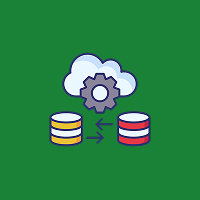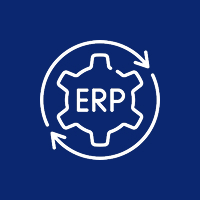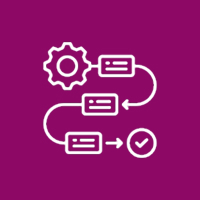Cloud ERP systems are changing the way businesses work. Increasing speed in processes, ease in accessibility to data, and ease of collaboration. But where cloud ERP really shows its worth is when it is integrated with your other business tools. In this blog we will break down cloud ERP integration into simple terms, and give you insights on how it can drive growth, efficiency, and better decision-making.
What Is Cloud ERP Integration?
Cloud ERP integration involves connecting your ERP system with other cloud-based business tools such as CRM, inventory software, e-commerce software, and financial systems. It creates a seamless flow of data between applications and removes the need for manual entries and siloed operations.
When your e-commerce store sells an item for example, the inventory counts in your ERP system are automatically updated. There are no spreadsheets, no duplications; just one seamless and connected workflow.
Key Benefits of Cloud ERP Integration (Extended)
1. Access to Real-Time Data Across Systems
One of the most powerful benefits of cloud ERP integration is real-time access to synchronized data across the organization. Regardless of which department or function an employee is in (finance, sales, procurement, customer service), they all have access to the same current data. This enables visibility across the organization, providing accurate data for better decision making at every level and across every department. For example, a salesperson would now be able to see what product is currently available, while a finance team could view real-time information regarding revenue, without having to worry about manual updates and timely reports.
2. Better Operating Efficiency
Manual data entry between independently disconnected systems is too time consuming and error-prone. By automating these processes, cloud ERP integration reduces human error and allows your employees to focus on tasks that require thought and strategy. It also streamlines actions like order processing, inventory updates, and invoicing – minimizing delays and maximizing the pace of productivity throughout the organization.
3. Better Customer Experience
Customer expectations have never been higher. Integrated ERP and CRM systems allow your team to see a 360-degree view of each customer – including their purchase history, support tickets, preferences, and real-time order status. This enhances issue resolution, consistency with communication, and allows for greater focus on the customer experience. When systems are integrated, customer satisfaction improves, whether it is B2C or B2B.
4. Scalable and Future-Proof
Once you begin to grow, it is natural that your technology stack needs to grow with you. Cloud ERP integration allows for scalability because it gives you the flexibility to easily add or connect new applications to your existing tech stack—whether that application is an ecommerce platform, warehouse management solution, or a new CRM. In contrast to traditional ERP systems that sometimes take years of planning and development to implement, integration greatly simplifies the process of expanding on your technology stack, allowing you to steadily improve your technological aspects without major infrastructure changes (and without the costs and down-times typically associated with upgrading your ERP).
5. Improved Reporting and Cross-Departmental Intelligence
If your business data lives on various different, disparate platforms, creating useful reports can often be nearly impossible. But with integration, you now have access to your data in one centralized place and can find projects you want to track performance on, create real-time reports of data, and monitor key performance indicators without needing to jump between multiple systems. The executives can also see projects associated with both performance and trends, as well as workflow challenges or bottlenecks, and can make faster & more informed decisions. Finally, because reports are generated & distributed automatically, employees can spend far less time compiling and converting spreadsheets seven different ways to achieve their end goal (and later making changes), allowing for improved time management and accuracy.
6. More Compliance and Audit Ready
Integrated cloud systems increase traceability and help facilitate consistent data standards across your organization. This is an especially valuable advantage for businesses in a regulated industry where compliance and audits are an essential part of doing business. When your organization has ERP cloud integration (i.e documenting financial records, stamping chronologically ordered operational logs, and maintaining customer/transaction data), everything is secure, documented, and organized for audit or access purposes.
7. Cost reduction & increased ROI.
By minimizing redundancy, duplication of work, and other manual tasks, investing in cloud ERP integration can help organizations reduce labor costs (as well as the mistakes associated with manual input of data), reduce or eliminate the costs associated with multiple data errors, and reduce overall software licensing costs by streamlining the amount of tools deployed. The efficiencies and automation gained through integration will increase your ERP system ROI over time!
Integration Method Types
- API Integration – Most modern ERP platforms include APIs that allow you to integrate them with other platforms with ease.
- Middleware – Applications like Zapier, Boomi or MuleSoft work as middleware to integrate applications and manage complex integrations.
- Custom Builds – Developers can build custom integrations that integrate your unique workflow processes.
Challenges to Consider
Large benefits of integration are possible, but there are considerations:
- Data security & compliance – Ensure all data transfers are encrypted, and data is secure.
- Software compatibility – Multiple legacy systems may have to rely on custom built connectors.
- Ongoing maintenance – Cloud systems are continuously improving and upgrading, requiring the ongoing review of integrations to ensure optimal performance.
Best Practices to Follow for Cloud ERP Integrations
- Articulate goals of integration in advance.
- Choose technology that is compatible and scalable.
- Perform rigorous testing before integrations go live.
- Monitor performance on an ongoing basis.
- Employ reputable ERP consultants or integration partners.
Conclusion
Cloud ERP integration simplifies operations, connects your departments, and gives you a competitive edge. By automating data exchange and eliminating silos, your business becomes more agile, informed, and responsive.
If you’re exploring cloud ERP integration or want expert guidance on how to get started, reach out to a trusted ERP solutions provider. Whether you’re streamlining processes or scaling growth, the right integration strategy will set the foundation for long-term success.
Contact Us Today













 Database Development
Database Development












































